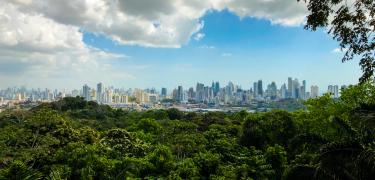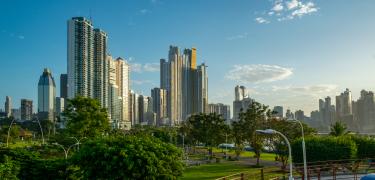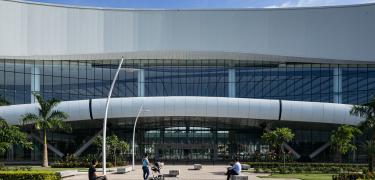Birdwatching in Panama City
If you're a bird lover visiting Panamá with your notebook, be sure to spend a couple of days in Panama City. Nearly half of the more than 1,000 species that live in the country can be seen in and around the city.
Panama City is one of the 5 places in the world where you can see migrations of more than 1 million birds. If you visit us in October, your records can reach up to 2 million birds in a single day, including more than 15 species of endangered birds of prey.
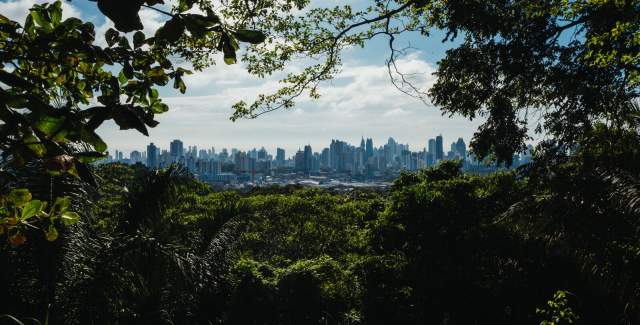
Birds in National Parks
In the Metropolitan National Park and the Soberania National Park, you can take guided sighting tours so you don't miss anything.
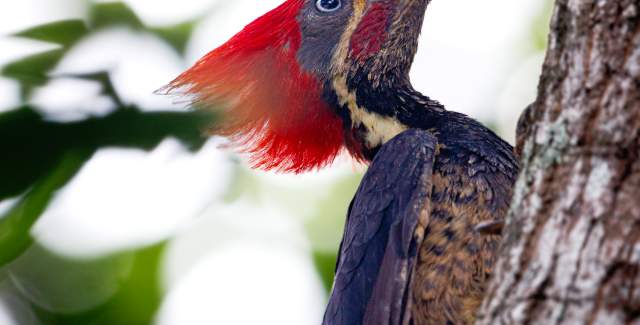
Within the city limits, you will find the Metropolitan National Park, 232 hectares of Tropical Dry Forest. Walk its 5 trails in search of the yellow-green tyrannulet (Phylloscartes flavovirens), the lance-tailed manakin (Chiroxiphia lanceolata) and the rosy thrush-tanager (Rhodinocichla rosea).
The trails of Soberania National Park are considered by expert birdwatchers to be some of the best in the world. On the Pipeline trail, 50 minutes from the city, more than 400 species have been recorded. Walk carefully to find the rufous-vented ground cuckoo (Neomorphus geoffroyi), the wing-banded antbird (Myrmornis torquata) or the yellow-green tyrannulet. In the 4 km of forest of the Plantation Trail, try to spot the scaly-throated leaftosser (Sclerurus guatemalensis), the brownish twistwing (Cnipodectes subbrunneus) and the tropical royal flycatcher (Onychorhynchus coronatus).
In addition, very close to these trails, you'll find the tower of the Panama Rainforest Discovery Center and the Canopy Tower, two special infrastructures made by and for professional birdwatchers.
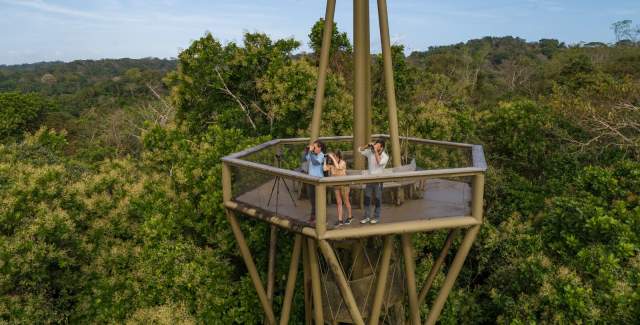
Sightings in Gamboa, Cerro Azul and Cerro Jefe
Near Gamboa you can also walk the old trail that connects the town with Panama City or walk along the Summit Lakes. On these trails, look for the jet antbird (Cercomacra nigricans), the pale-eyed pygmy tyrant (Lophotriccus pilaris) and the boat-billed heron (Cochlearius cochlearius).

The Summit has an observation tower in the middle of the forest. Climb up to find amazing species and see the treetops from above.
To the east are the highest parts of Panama City: Cerro Azul and Cerro Jefe, where you can find 40 species of birds unique to these mountains. Try to find the blue-fronted parrotlet (Touit dilectissimus), the violet-capped hummingbird (Goldmania violiceps) or the yellow-eared toucanet (Selenidera spectabilis).
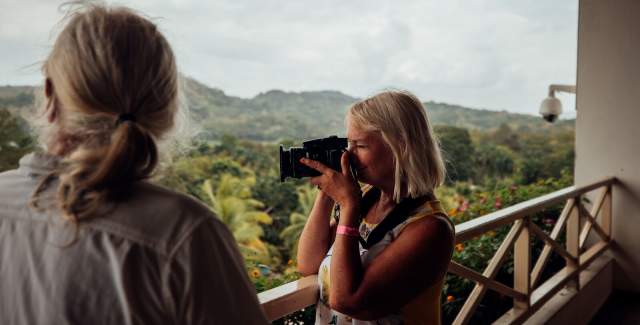
Birdwatching Seasons
It's always a great time to see Panama City's resident birds. But if you want to see migratory birds on their way south, make sure you come in September, October, or November. The number of birds that pass over the city is truly impressive, especially in October.
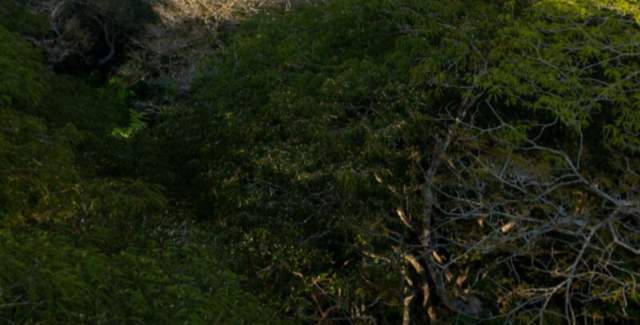
Many experts gather at strategic observation sites to compete for quantity and species counts. Are you up for the adventure of counting birds of prey? Add to your count the red-headed vulture, the Swainson's hawk, and the sparrowhawk, among many more.
Summer is a peak season for those of us who love birds. January, February and March are full of activity. You can see many local species in search of water and some migratory ones that decide to stay in Panamá. Without going too far from your hotel, you'll be able to see a lot of species.
The start of the rainy season, from April to May, is the perfect time for you to see birds mating and nesting, and birds feeding their young.
If you come from March to May, you may come across some of the migratory birds that are already returning north. But this migration is not the largest, as the birds disperse along different paths upon returning.
For those of us who walk looking up at the sky, the trails of the City and National Parks of Panamá will be the perfect place to increase our species count.

